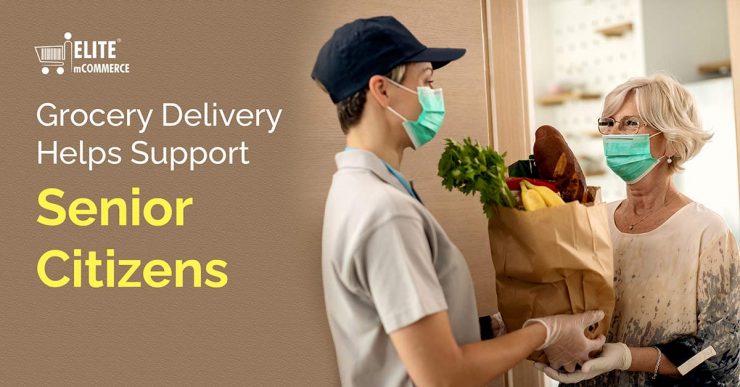Grocery shopping habits have changed dramatically in the last year, with online ordering taking a major role during the COVID-19 pandemic. Senior citizens were heavily impacted by the pandemic due to being at high risk, making online grocery shopping a safer alternative to in-person shopping. Even without the pandemic, older shoppers often have mobility issues that make delivery more convenient, but online services face challenges reaching them technologically.
Instacart launched its Senior Support Service last year with a phone line to help seniors set up their carts for online orders, making it a priority to boost their accessibility to seniors. Instacart’s Beyond the Cart: A Year of Essential Insights report stated that they saw a 9% rise in seniors using the service, the highest jump in any age category and that over 300,000 seniors learned to use the platform with the help of their senior support specialists. Even after many in the US have been vaccinated, they report that 1,000 new seniors are taking advantage of the special service daily.
Elderly shoppers also have turned to family and friends for help with groceries and other shopping needs. 74% of primary grocery shoppers surveyed for the Instacart report said that another member of their household had taken up shopping responsibilities. Younger people have been doing more shopping in the service of older relatives due to the pandemic, and they have also played a role in helping older relatives make use of online shopping solutions.
Improving Grocery App Accessibility
Older people can be slower to adopt new trends including online ordering, but the pandemic has caused some changes. For instance, NPD Group found that people 55 and older turned to digital ordering from restaurants at a 200% rate, and those older than 65 did so at a 428% rate. Seniors are able to adopt apps and online ordering sites, but certain aspects can be challenging to them. Grocery orders tend to involve more complex browsing than restaurant orders. Users need to browse across the entire store’s inventory in different categories and load up a large cart before checking out.
Older customers are frustrated by various elements of the online shopping process. Creating accounts and logging in can be an obstacle, but apps that keep users logged in and have a streamlined signup process where users can use their email or phone number to register can make this easier on senior citizens.
Many grocery apps make it easy to reorder the same item again, which is useful when many staple goods like milk, eggs, bread, and vegetables are purchased by customers on each order. This can ease the difficulties of navigating through different categories to find the right brand and type. Other key accessibility features include making text and images large enough to be read by those with visual impairments, clear indications of quantities and sizes of products so shoppers are sure of what they are ordering, and links and menus that are easy to click and browse.
Read also:10 Best Grocery List Apps for Android
Checkout can be another area of concern. Customers need to be able to review their orders and easily add or remove items before checkout. It should also be easy to enter a payment method and get a digital receipt without demanding extraneous information that can slow the process down. Customers should get good feedback that they successfully completed the checkout and when they can expect their order to arrive.
Finally, it’s important to train employees to work well with older customers. If customers cannot figure out the app on their own, make sure they can reach a human to speak to. Whether this utilizes a phone hotline like Instacart’s or communication with delivery drivers, they should have quick access to someone who can help. Grocery apps can enable 2-way communication by chat, leading to great positive feedback to shoppers about their services.
As grocery delivery becomes available everywhere, it presents an ideal solution to ensure senior citizens always have healthy food and other necessities available according to their needs. Grocery brands need to step up and pay attention to the needs of older customers to make sure they are not being left out, as they could be a major audience of their online delivery strategy in the years to come.









Add comment